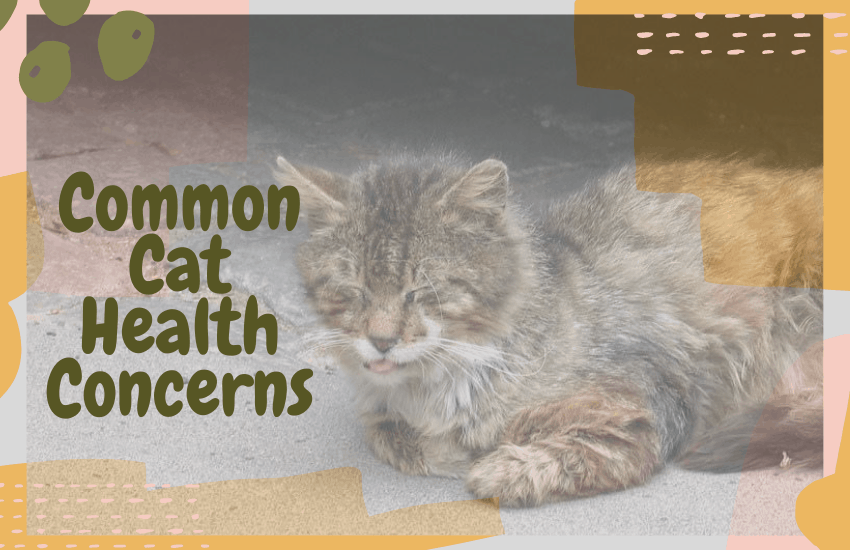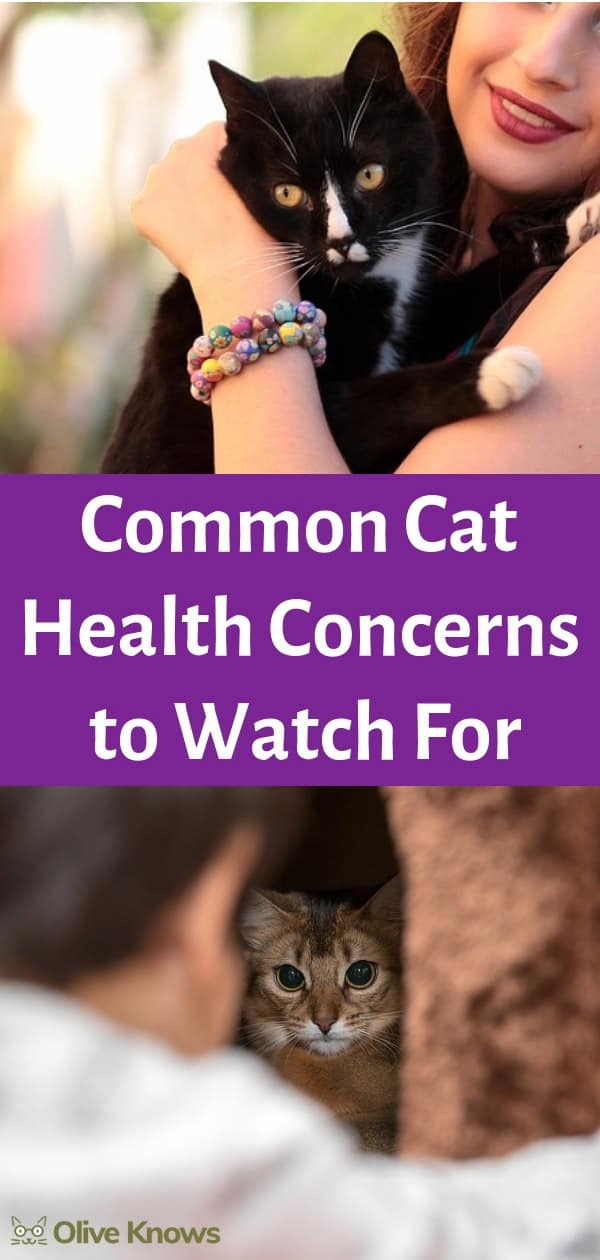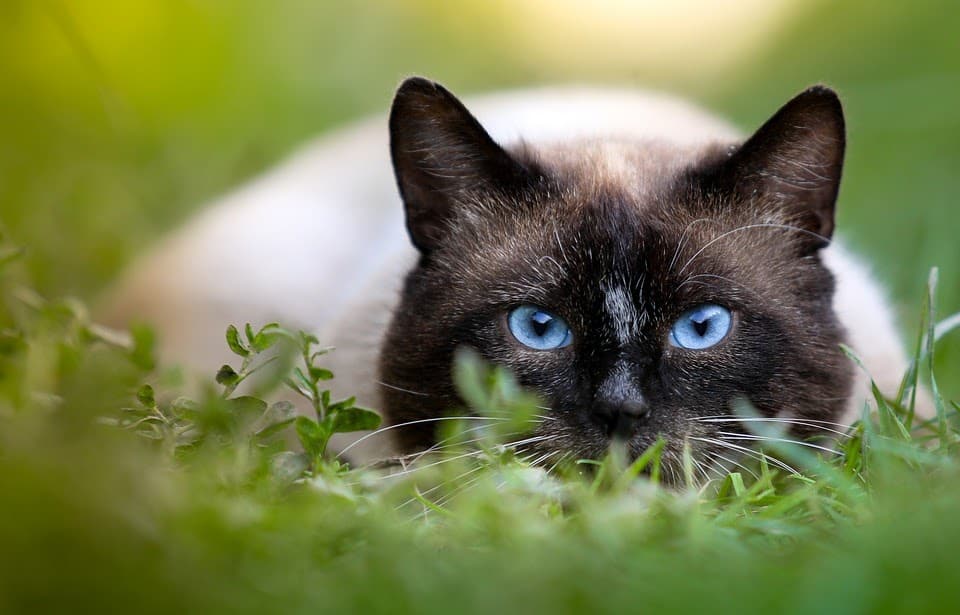
For some people, looking after a cat is the closest experience to taking care of one’s own child. This is why when cats get sick, everyone is familiar with that feeling of worry and fear.
Quick trips to the vet are made and when really necessary, a cat parent will not even hesitate to either skip work for a day or head out right away after work to be with their cats.
This must not always be the case, though. When cat owners know what to watch out for and they are aware of the subtle health changes that their cats are going through, as well as the highly probably health conditions and risks with their feline friends – they can take care of their cats better and be more prepared for health concerns.
There are many factors to consider when determining the current health condition and possible risks in a cat – including age, breed, and lifestyle to name a few. With all these considered, below are some of the most common cat health problems along with signs and symptoms to watch out for.

Table of Contents
Understanding Common Cat Health Problems
Fleas
As much as fleas are a common problem for cats of all ages, they are especially common in kittens. These little critters are barely visible on the naked eye, however, the spots of black specks in the fur of a kitty indicates this.
Another sign to look out for is if the kitten keeps on scratching that could eventually lead to hair loss on certain parts of his body. Fortunately, fleas are easily treatable and there are topical and organic methods of dealing with the flea. There are flea collars available as well.
Ringworm
A type of fungal skin infection, “dermatophytosis,” commonly known as ringworm, this is visible through ring-shaped red spots on the skin of a cat. There are also instances that the ring-shape is in forms of scaly skin spots, hair loss patches, itchy spots, and dandruff. If you spot ringworm in your cat, it is best to visit the vet right away and to extra careful in handling your cat because ringworm is contagious to humans. Some ways to help keep your cats be ringworm-free include anti-fungal sprays.
Intestinal Worms
Cats are very playful and curious. Sometimes, these characteristics expose them to harmful parasites such as hookworm, tapeworm, roundworm, and whipworm that can cause health problems.
Cats that are infected with this parasite often display symptoms of weight loss and diarrhea, as most of the nutrients are being absorbed by the parasites. At times, worms may also appear in the fecal matter of some kittens. If left untreated, intestinal worms can be life-threatening as it causes dehydration among young cats.
Regular deworming is also advised for kittens, starting at eight weeks old. This is often administered by the vet together with the first few shots of the kitten. There are also treats that promote a healthy digestive tract for young cats, as well as hydrating and deworming solutions that can be mixed with your kitty’s drinking water.
Ear Mites
Scratching, especially excessive, is one of the most common indicators that a cat may have some health problems. Cats that continuously scratch their ears and shake their heads, often suffer from ear mites.
Hardly visible, ear mites are smaller than grains of salt and are highly contagious between pets. Treatment for ear mites includes regular and gentle ear cleaning, as well as liquid ear drops. If left untreated, ear mites can cause serious health problems such as eardrum rupture or loss of coordination among cats.
Upper Respiratory Infections
A common serious illness especially for very young kittens, upper respiratory infections can be detected through sneezing, lack of appetite, and yellow discharge from their eyes and rose. If these are observed, immediately bring the kitten to a vet in order to determine the type of infection and the best remedy possible.
Diarrhea
There are many factors that can cause diarrhea among cats, including a change of diet, separation anxiety, a new environment, or being surrounded by lots of different people.
These cases are best treated with returning to the previous diet and a gradual shift to the new one, stress relief activities such as toys and games, as well as cat vitamins and supplements that can boost a cat’s immune system.
However, it is important to keep your cat close, as diarrhea can also be a sign of serious underlying health concerns such as parasite, immune disorders, or infections. If diarrhea lasts over a couple of days, it is best to bring your cat to a vet.
Conjunctivitis
A contagious condition among house pets, conjunctivitis is the inflammation of a cat’s eyeball and eyelid membrane. When infected, a cat will have a pink or swollen eye with a clear discharge. In a multi-pet household, it is best to isolate the infected pet in order to avoid spreading the infection among other pets.
For a light, watery discharge, eye cleansers can be purchased. However, if the discharge displays a mucus-like texture that dries up as a crusty substance in the eyes of your cat, a trip to the visit is highly recommended.
Vomiting
One of the most common health concern among cats of all ages is vomiting. This is caused by a wide variety of things, ranging from overfeeding or ingesting something inedible to urinary tract infection or diabetes.
Once vomit is spotted or if the cat starts drooling or breathing heavily, keep a close eye on the cat and if the vomiting persists, contact a vet right away. It is also best to collect a sample of the vomit so the vet can examine it and determine the cause.
Feline Immunodeficiency Virus (FIV)
A slow but deadly infection among cats, FIV might be difficult to detect unless intentionally tested for. Signs to watch out for include enlarged lymph nodes, weight loss, anemia, fever, disheveled coat, and poor appetite.
When left untreated, FIV will severely weaken the immune system of a cat making it highly vulnerable to other infections. Regular testing for FIV is recommended.
Feline Leukemia Virus (FeLV)
FelV is highly contagious among cats, making it a common health concern to look out for. This virus attacks the immune system of a cat and weakens them to the point of being susceptible to other health problems.
It is important to do regular testing for FeLV as well, in order to ensure that your cat is free from this life-threatening virus. Infected cats often show signs of pale gums, poor coat condition, enlarged lymph nodes, yellow color in mouth and whites of eyes, weight loss, and problems in bladder, skin, and respiratory systems.
Heartworm
Transmitted by mosquitoes, heartworms are deadly parasites that inhibit domestic pets including cats and dogs. For cats, heartworms often attack the lungs. Cats infected with heartworms display the following symptoms: lethargy, bloody stool, vomiting, coughing, weight loss, and lack of appetite. There can also be sightings of worms in the cat’s stool or near the anus.
Urinary Tract Infection (UTI)
A disease present in the bladder and urethra of a cat, UTI is characterized by painful urination and sometimes blood in the feline urine. To determine if your cat is experiencing UTI, be mindful of their behavior inside the litter box – are they meowing in pain, uncomfortably squatting, or straining when urinating? If so, visit the vet right away.
There are various reasons why a cat may have UTI, ranging from unhealthy diet, bacterial infection, high content of ash in dry food, blockage of urine flow, and more.
Acute Renal Failure
If a cat accidentally consumes antifreeze or if its kidney is compromised, acute renal failure can happen. Consuming antifreeze is deadly for cats and this toxin must be eliminated right away.
To spot if your cat may have an acute renal failure, check if there is straining while urination, continuous vomiting, lack of coordination, and seizures. If these are observed, bring the cat to a vet clinic immediately.
Obesity
One of the leading causes of diabetes among cats, obesity is especially common among indoor cats. Obese cats are not able to move around much, demonstrate difficulty in breathing, and are often lethargic.
When left untreated, cat obesity can lead to several life-threatening feline diseases. When detected early, this can be corrected through a proper diet regimen and regular exercise.
Diabetes
A common health problem for mature to senior cats, symptoms of diabetes includes insatiable appetite and sometimes noticeable weight loss. Indoor obese cats that rarely move around and exercise can also develop diabetes. Once diagnosed, a diabetic cat would require daily monitoring and administering of insulin.
Heart Disease
One of the most common health concerns for senior cats is cardiomyopathy, which is the thickening of the cardiac muscle tissue of the heart. As this condition worsens, the heart becomes enlarged and less effective, pumping less blood. Over time, certain types of progressive heart diseases lead to congestive heart failure.
Arthritis
There are “normal” changes that come with aging, however, arthritis is not one of these. To know if your senior cat is suffering from arthritis, be more observant if they become more uncomfortable and irritated when being held, when they stop being active, and if they seem to sleep more than usual.
High-Rise Syndrome
A safety risk among cats that can easily be prevented, High-Rise Syndrome happens when a window is left open causing the cat to fall out of it. This happens more than it should that vets have given a name to the condition.
Cats might be agile but falling from a high place remains deadly dangerous. Possible health and safety concerns include broken limbs and pelvises, punctured lungs, shattered jaws, and death.
Understanding Cat Breeds and Common Health Problems of Each

The cat’s breed makes for its genetic makeup, making it totally unique in terms of physical appearance, behavior, and health. There are also cat breeds that are more prone to some health issues d compared to others. Below is a short list of common diseases for some popular breeds.
- Ragdoll: Heart Problems and bladder stones
- Siamese: Heart, gastrointestinal, respiratory, dental, and eye problems
- Scottish Fold: Arthropathy or arthritis
- Himalayan: Polycystic kidney and respiratory problems
- Maine Coon: Cardiomyopathy, hip and elbow dysplasia, and spinal muscular atrophy
- Persian: Respiratory, digestive, vision, bladder, kidney, and liver issues
- British Shorthairs: Hemophilia B, susceptibility to bleeding
- Rex: Heart problems
- Cornish: Baldness and umbilical hernia
- Devon: Hereditary myopathy
- Abyssinian: Hearing, vision, dental, and renal problems,
- Manx: Spinal defects, urinary and fecal issues
- Birman: Neutrophil granulation, a blood disorder
- Burmese: Cranial, kidney stones, glaucoma, and hyperesthesia syndrome making their skin extra sensitive
- Bengal: Heart, vision, and joint problems
- Norwegian Forest Cat: Heart problem, hip dysplasia, and glycogenosis
There is no specific way to determine the exact health condition of your cat, rather than going for a quick visit to the vet. Be more conscious of lumps, bumps, or changes in behavior as these are the first signs that your cat’s health may be compromised. Cats are good at hiding their pain, so it is very important for cat owners to regularly check on their cat’s health and to immediately spot early signs and symptoms.
Checking the litter box is a recommended method of keeping the health of your feline friend in check. Any change in their litter box behavior and/or waste must be looked into.
There are many factors that affect a cat’s overall health; with age, lifestyle, breed, and environment playing big roles. Understanding your cat better and knowing what works best for his breed and age are sure ways of ensuring your cat enjoys more healthy and happy years to come.
Continue reading:


Leave a Reply